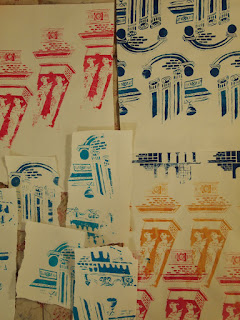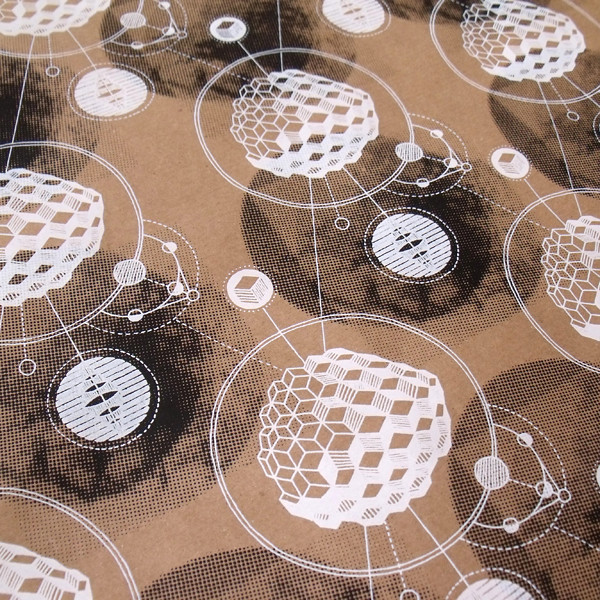Ever sinse spotting someone using this technique in the first week I had wanted to try it, and it really fitted in with the watercolour style of my sketchbook. I like the soft quality of the print as all the colours faded slightly when they were steamed giving a very gentle effect. My first attempts were very poor as I had made my reactive dyes too weak, but by the third session using manutex I had got to grips with how each colour would balance out with the dyed grounds.
Below was perhaps my favourite manutex print, as the salt had made lovely pools in the dye - but I had printed it onto the backing cloth (it went straight through the silk) so I had to suffice with a photo. A mistake I didn't make again!
.....
I wish I had started playing around with the reactive dyes earlier on in the project,
as I loved the effects that came out once I started doing tesselated repeats.























